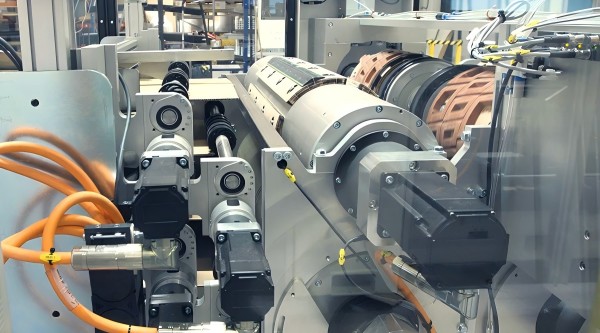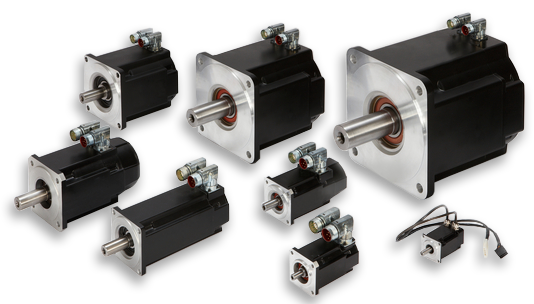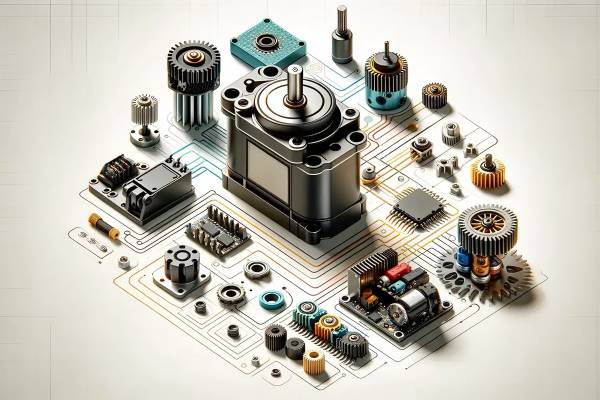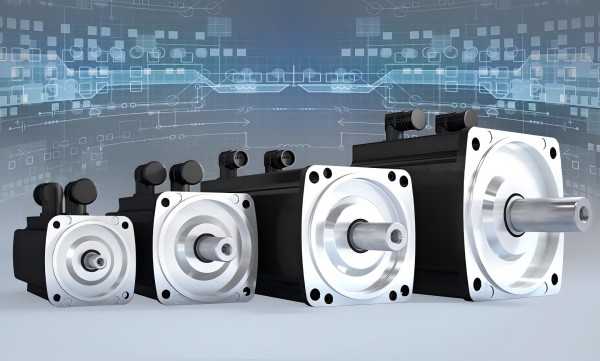Types of Servo Motors and Their Costs
Servo motors come in a variety of forms, each with special qualities and a range of prices. Below, we will look at the three primary types of servo motors and how their cost differs:
DC Servo Motors:
DC servo motors are one of the most basic forms of servo motors. They typically offer high torque and efficiency, especially at lower speeds. The cost of DC servo motors generally ranges from $100 to $500, depending on the size, torque, and manufacturer. However, the cost is increased because they need a separate feedback device.
AC Servo Motors:
High-speed, high-torque applications frequently use AC servo motors. AC servo motors are generally more expensive, with prices ranging from $200 to $2000 or more. The exact cost depends on the power rating, torque specifications, and the brand.
Brushless DC (BLDC) Servo Motors:
The long lifespan, low maintenance requirements, and great efficiency of brushless DC servo motors are well-known. They are more commonly used in precision applications, such as robotics and aerospace. The cost of BLDC servo motors can range from $150 to $5000, depending on their size, features, and performance.
Key Factors Influencing the Cost of Servo Motors
Several factors affect the price of a servo motor, including:
A. Motor Specifications and Performance
- A servo motor’s specifications are the main determinants of its cost, and they include:
Torque Output: Higher torque requirements generally increase the cost of a servo motor. Motors that can handle higher loads and deliver more torque require more advanced materials, larger sizes, and more powerful components. - Speed and Power: Motors that can operate at higher speeds or deliver more power (measured in watts or horsepower) also tend to be more expensive. For instance, servo motors used in high-speed CNC machines or robots may cost significantly more than those used in simple applications.
- Precision and Resolution: Servo motors that require precise positioning or high-resolution control are typically more expensive. The inclusion of high-quality encoders or resolvers that can provide feedback on the motor’s position, velocity, and acceleration can increase the price.
B. Feedback Mechanisms
Feedback devices, such as encoders and resolvers, are essential for providing the closed-loop control required in servo motors. The cost can be greatly influenced by the kind and caliber of these feedback devices. Encoders are typically more costly, particularly optical encoders or ones with higher resolution.
C. Motor Size and Physical Design
Larger motors capable of handling heavier loads or providing higher torque generally cost more. Additionally, the physical design, such as whether the motor is air-cooled or liquid-cooled, can impact the cost. Air-cooled motors are typically less expensive, while liquid-cooled motors are designed for high-power applications and are more costly.
D. Brand and Manufacturer
The brand reputation and the manufacturer’s market positioning also play a crucial role in determining the price of a servo motor. Renowned brands like Siemens, Yaskawa, and Fanuc are typically more expensive due to their established reputation, high-quality products, and advanced features. Conversely, lesser-known manufacturers could provide competitive pricing, but they might also sacrifice some support or performance features.
E. Application Requirements
Specialized applications, such as in the aerospace or medical sectors, require highly tailored servo motors, often with custom specifications. These motors are more expensive because of the need for specialized components, high reliability, and compliance with industry standards.
The Role of Drive Systems and Controllers in Servo Motor Costs
Servo motors require a control system to operate effectively, which often includes a drive unit or controller. These systems are integral to the motor’s performance, providing feedback, regulating current, and ensuring smooth operation. The price of the controller and drive system varies based on its complexity.
Simple Controllers:
Simple control systems with basic functionality can cost between $100 and $500. These are suitable for applications where the motor operates at constant speeds and the control needs are minimal.
Advanced Controllers:
More advanced controllers that offer dynamic control, precise torque control, and multi-axis coordination can cost from $500 to $5000 or more. These are typically used in complex, multi-axis systems like robotics and CNC machines.
Example Cost Comparison of Servo Motors
To give a clearer idea of the pricing, here is a comparison of some common servo motor models based on their type, specifications, and application:
| Motor Type | Torque | Speed | Price Range | Common Application |
| DC Servo Motor | 0.2 – 10 Nm | 1000 – 5000 rpm | $100 – $500 | Basic robotics, light automation |
| AC Servo Motor | 1 – 30 Nm | 3000 – 8000 rpm | $200 – $2000 | Industrial automation, CNC |
| Brushless DC Servo Motor | 0.5 – 50 Nm | 1000 – 6000 rpm | $150 – $5000 | Robotics, aerospace, precision |
| Direct Drive Servo Motor | 20 – 300 Nm | 1000 – 2000 rpm | $2000 – $8000 | High-torque, heavy-duty systems |
Long-Term Costs: Maintenance and Efficiency
Some significant factors influencing the long-term cost of servo motors are as follows:
Energy Efficiency
Over time, servo motors—particularly high-efficiency brushless DC motors—can drastically lower energy usage. Choosing a highly efficient motor can lead to lower electricity costs, which is particularly important in large-scale operations that run motors continuously.
Maintenance and Downtime
Periodic maintenance is necessary for servo motors, which includes lubrication, feedback system monitoring, and wear and tear inspection. While high-quality servo motors from reputable brands tend to last longer and require less maintenance, the cost of repair or replacement parts should be considered.
Lifespan and Reliability
Servo motors with longer lifespans may have a higher upfront cost but offer better overall value due to fewer replacements and less downtime. Purchasing high-quality products can save long-term expenses by reducing the need for maintenance or motor replacement.

How to Choose the Right Servo Motor for Your Budget
Selecting the right servo motor involves balancing performance, application needs, and cost. To help businesses choose the right servo motor, consider the following:
- What are your application’s speed, torque, and precision requirements?
- What is your budget for the first purchase and ongoing running expenses?
- Consider how energy-efficient the motor is and whether it will help reduce operational costs over time.
- Select a trustworthy brand that offers a warranty program and dependable customer service.
By considering factors such as motor type, performance specifications, feedback devices, drive systems, and long-term operating costs, businesses can make informed decisions that balance both budget and performance. While servo motors are more expensive than standard motors, their precision, efficiency, and reliability can justify the investment, especially for high-performance applications. Partnering with a reputable servo motor manufacturer can also help ensure that you select the best motor suited to your specific needs, offering both high-quality products and strong customer support.



